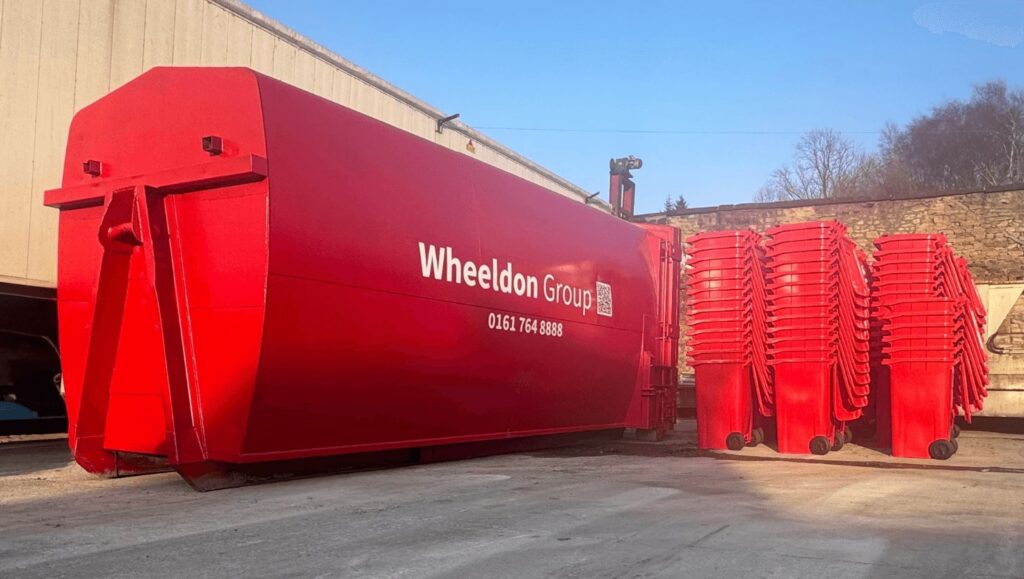
Are you allowed to burn garden waste in the UK?
Autumn brings crisp evenings, falling leaves, and plenty of garden clear-ups. For many, the...
Read MoreArrange your free audit
Enter your details below and a member of our team will be in touch to discuss a free site audit.
Alternatively, call us on 0161 764 2000
"*" indicates required fields

Got a question?
"*" indicates required fields
Whats on this page:
Roll-on roll-off skips are large-scale waste containers, mainly used across construction and industrial sites. But what makes them different to any other skip? In this post, we’ll break down what a roll-on roll-off skip is, when you might need one, and how they compare to standard skips.
A roll-on roll-off skip (or RoRo skip) is a large waste container designed for bulky, industrial, and construction waste. These skips feature rear doors and low sides for loading heavy light, bulky materials. Common sizes for RoRo skips include:
Hiring a roll-on roll-off skip comes with a range of benefits, especially for construction sites, demolition projects,
and businesses needing a reliable way to manage large volumes of construction waste.
Roll-on roll-off skips are designed to handle large volumes of light, bulky waste that wouldn’t fit in a standard skip. From plastic and wood to cardboard and demolition debris, a roll-on-roll-off skip makes disposal quicker, safer, and more efficient.
Roll-on roll-off skips are fitted with rear doors and low sides, making it easy to load waste using wheelbarrows, trolleys, or even small machinery like mini diggers or forklifts. Unlike traditional skips that require lifting, RoRo skips reduce the risk of injury and improve safety on-site. Their design also allows them to be positioned closer to the work area, which cuts down on walking time and disruption.
Roll-on roll-off skips are built to handle mixed construction waste, including plastic, plasterboard, wood, and general site debris. This allows project managers to consolidate waste streams and reduce the number of skips needed on-site.
If you’re unsure whether your waste is permitted, just get in touch. We’re happy to advise on waste types, recycling options, and hazardous waste removal.
Prices for roll-on-roll-off skips vary depending on the size of your RoRo skip and where you’re located. For example, a 40-yard RoRo skip will cost more than a 20-yard RoRo skip. Similarly, how far your site is from our nearest depot will affect delivery and collection costs and your final quote. Enter your postcode here to see if we deliver to your site!
Whether you’re clearing a construction site, managing industrial waste, or planning a major refurbishment, our RoRo skip hire service makes large-scale waste removal simple, reliable, and cost-effective. We offer fast delivery, upfront pricing, and expert advice, with no hidden fees. Get in touch today at 0161 764 2000 or use our quick online form to book your RoRo skip and keep your project moving without delay.
Here’s the main difference between a skip and a RoRo skip:
You can put certain light, bulky waste into roll-on roll-off skips, including:
A roll-on roll-off skip is delivered to your site on a specialist lorry and “rolled on” into place using heavy-duty wheels. The skip has rear doors and low sides, allowing easy access for manual loading or machinery. Once filled with waste, it’s sealed and “rolled off” for safe transport to a licensed waste transfer station or recycling facility. The system is fast, safe, and ideal for handling high volumes of light, bulky waste on busy construction or industrial sites.
RoRo skips are perfect for disposing of large quantities of light, bulky waste found on construction and demolition sites, including wood, cardboard, plastics, paper, and strip-out debris from demolition or refurbishments.
These skips are designed to handle high volumes of light bulky waste, making them a great choice for large-scale jobs that generate more waste than a standard skip can handle.
While RoRo skips are versatile, there are certain restricted items you must not dispose of in them due to safety or environmental regulations:
Whether you’re looking for RoRo skip hire in Bury, Oldham or further afield, get started with a free quote today. With fast delivery, transparent prices, and collections you can count on, there’s no better name to trust than Wheeldons.